Testing a mattress for free before trying it out is a fantastic opportunity. Here’s how you can try out online mattresses in person before buying.
Blog > How to Sleep Better With Back Pain [7 Sleep Positions 2024]
Blog > How to Sleep Better With Back Pain [7 Sleep Positions 2024]
If you experience back pain, you’re not alone. According to the American Chiropractic Association, up to 80% of adults will experience back pain at some point in their lives. Back pain can hit at any time and can impact anyone from adolescents to older adults. While most might think back pain is caused by serious illnesses like arthritis, cancer, or a musculoskeletal disease, the most common causes of back pain are due to muscle/ligament strains, injuries, bad posture, lifestyle habits, or awkward sleep positions.
Most of us have slept in an awkward position and woken up sore and in pain-even more so if you already have existing back pain. When we sleep, we lose conscious control of our bodies and can end up in some odd positions. Sleeping in the right position can help ease pain and can help improve your sleep.
Here are a few sleep positions to help ease back pain.
For more tips, skip to the infographic below.
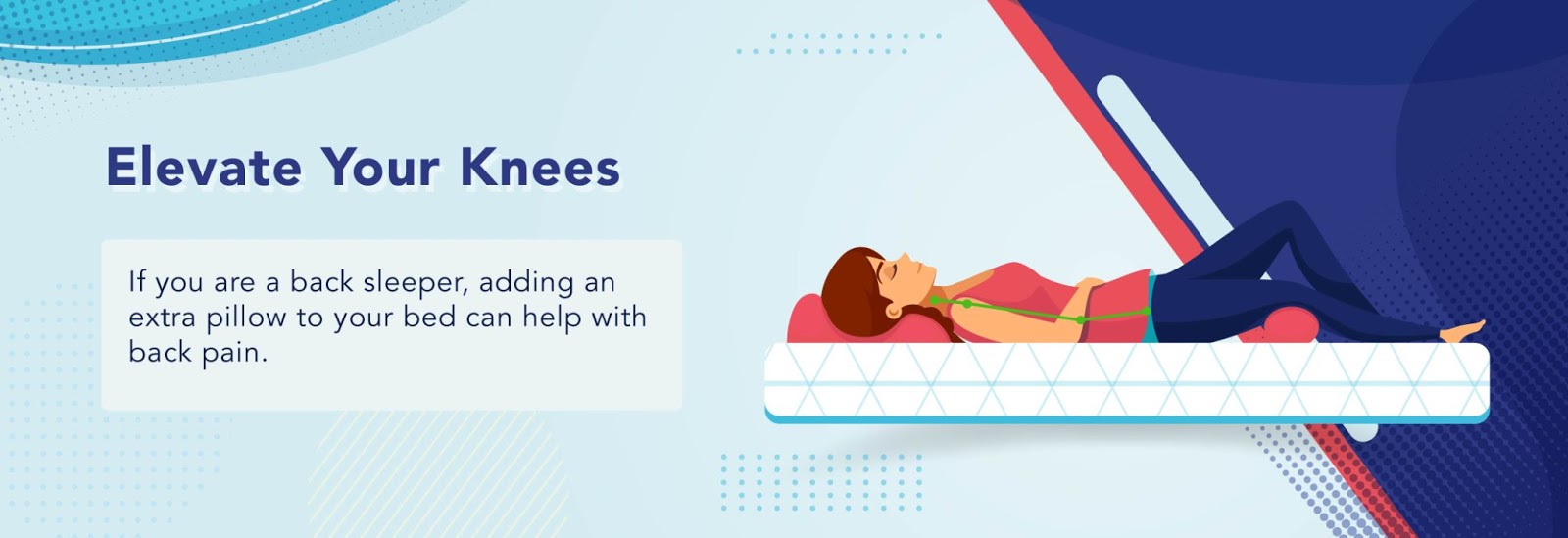
If you are a back sleeper, adding an extra pillow to your bed can help with back pain. By elevating your knees with a pillow while lying on your back, you reduce stress on your lower back. This sleeping position helps maintain the natural curvature of your spine. Any sleep position that alters the natural curve of your spine will eventually cause back pain.
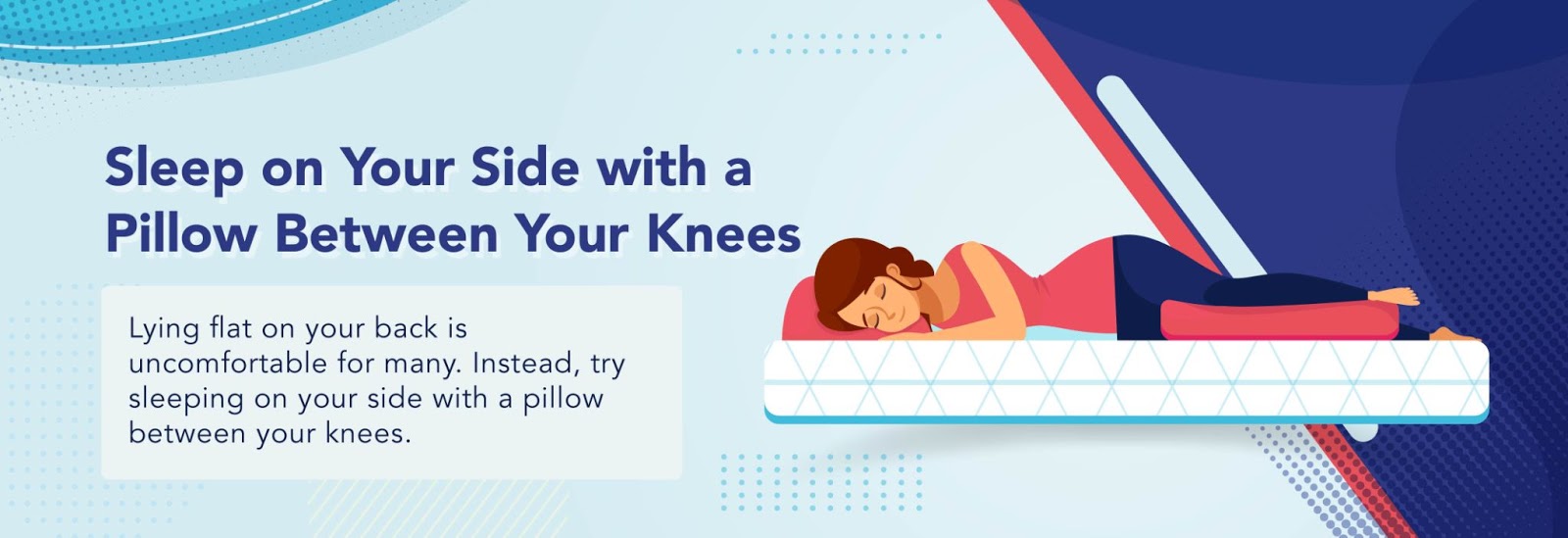
Lying flat on your back is uncomfortable for many. Instead, try sleeping on your side with a pillow between your knees. This popular sleep hack for reducing back pain helps keep your hips, spine, and pelvis in alignment. You can even buy special pillows designed for this sleep position.
If you decide to snooze on your side, make sure to alternate between the left and right sides of your body. According to Healthline, sleeping on the same side of your body night after night can cause painful muscle imbalances and scoliosis.

The fetal position is a classic sleep position for a reason- not only is it comfortable for many research has shown that sleeping in this position reduces symptoms of sleep apnea. The fetal position can be helpful for those suffering from a herniated disk. A nationwide survey found that the fetal position is the most common sleep position, according to The Better Sleep Council.
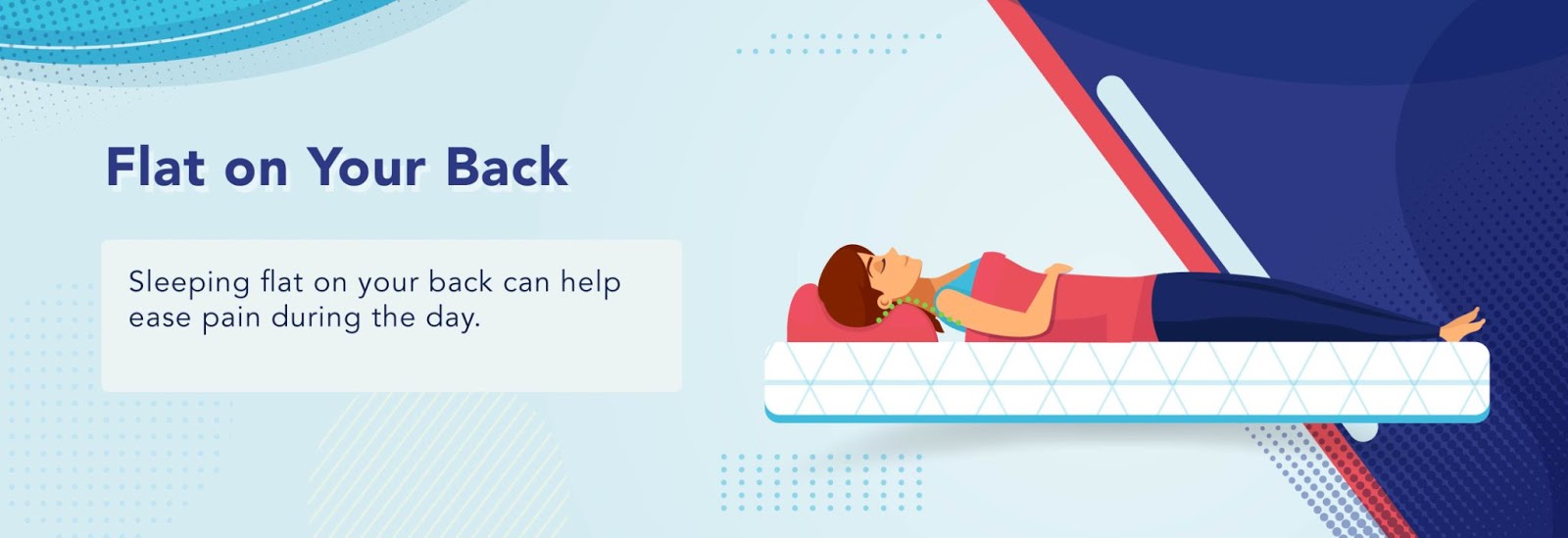
Sleeping flat on your back can help ease pain during the day. Sleeping on your back keeps your spine aligned and neutral, especially if put on a pillow under your knees or lower back. The added pillow under your knees or lower back helps maintain the natural curve of your spine, neck, and shoulders.
Numerous studies show that if you suffer from acid reflux, snore frequently, or have sleep apnea, sleeping on your back can increase symptoms. To avoid making acid reflux or snoring worse, it’s best to avoid sleeping on your back.

If you love nodding off in your favorite recliner, it can be good news for your back. Although you don’t want to sleep in a recliner all night, the position can easily be achieved in an adjustable bed. Sleeping in a reclining position takes pressure off your back. A study found that active senior citizens who slept in a reclining position experienced less pain back than those who slept in other positions.
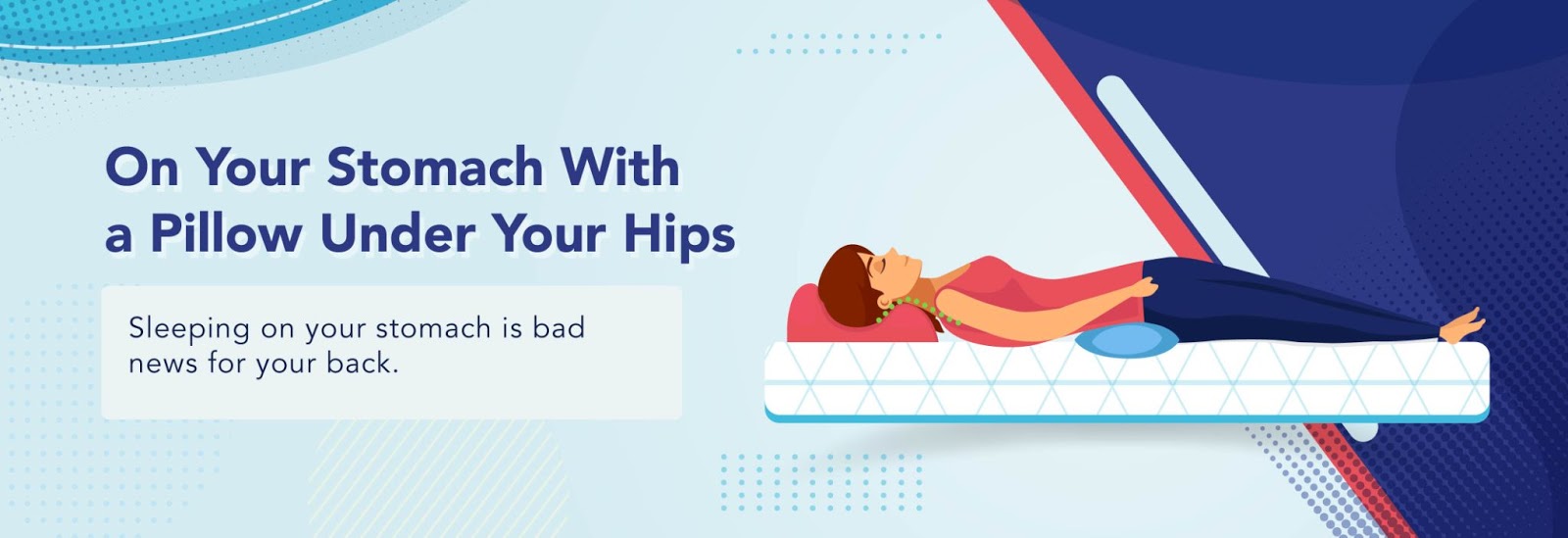
Sleeping on your stomach is bad news for your back. With only 7% of adults surveyed in a 2017 study reporting sleeping on their stomachs, getting some shut eye face down is not the most popular option. Stomach sleepers are likely to experience lower back pain; sleeping on your stomach causes a misalignment of the spine. If you can’t break the habit of stomach sleeping, it’s best to place a flat pillow under your hips to keep your pelvis in alignment.
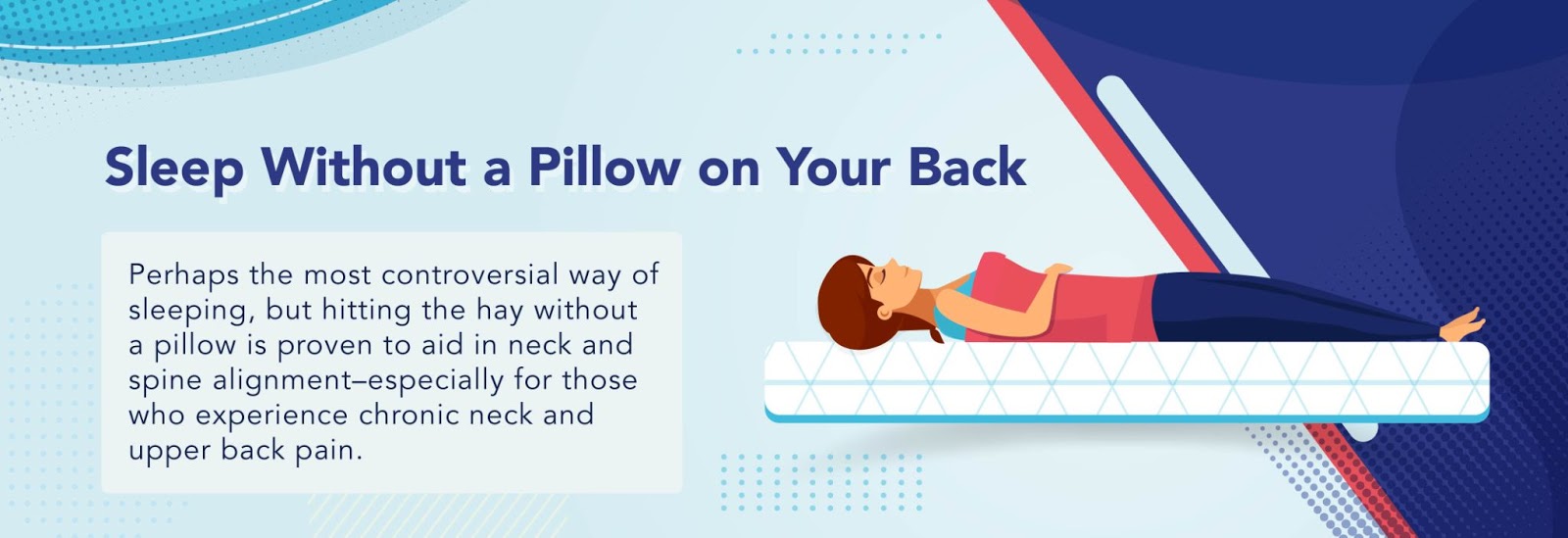
Perhaps the most controversial way of sleeping, but hitting the hay without a pillow is proven to aid in neck and spine alignment–especially for those who experience chronic neck and upper back pain. Giving up your favorite pillow might sound like a way to decrease your sleep quality and pain. However, sleeping without a pillow can have major benefits for your back pain.
Pillows prop up your neck, which puts a strain on your vertebrae and extends your neck. Forgoing the pillow helps keep your neck in a neutral position. Many medical experts and first-hand accounts claim that sleeping in any position without a pillow can help with back pain.
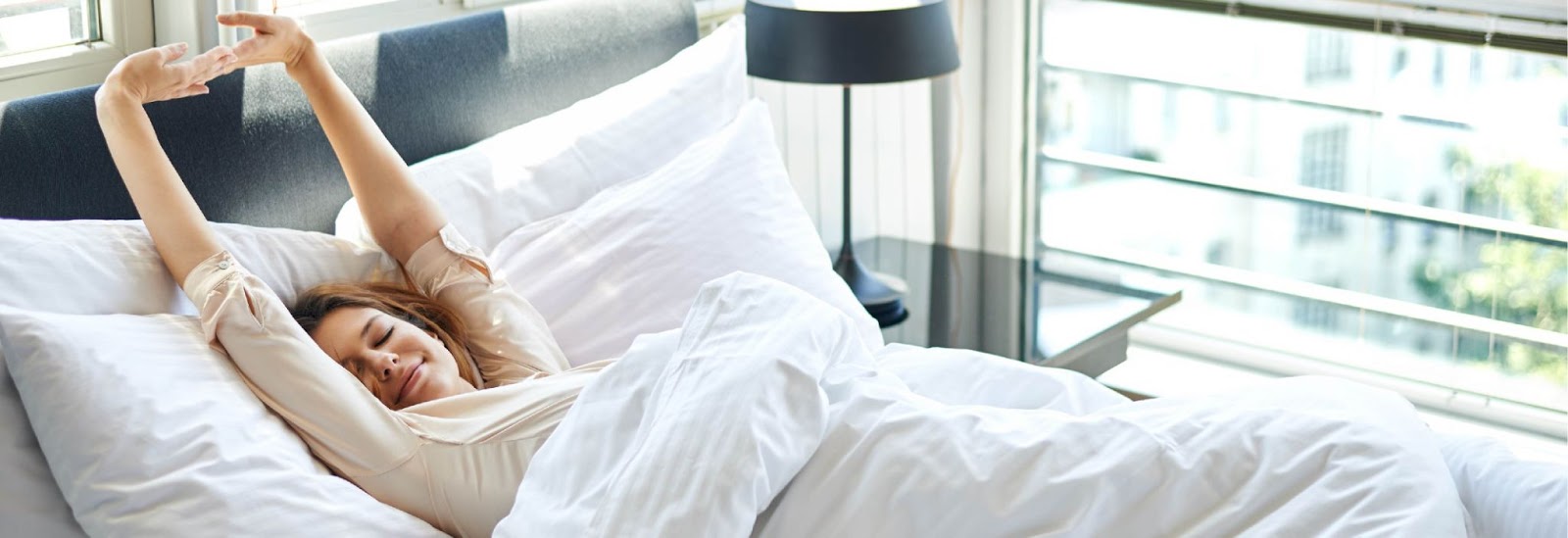
All types of back pain, regardless of cause, can inhibit your daily activities. Backaches can be both chronic and temporary. According to the Mayo Clinic, back pain usually improves in about a month with home treatment. Adjusting your sleep position can greatly reduce back pain, but what about when you’re awake? Your daytime activities also have an effect on your back pain.
If you are waiting on a doctor’s visit to confirm the cause of your back pain, or you’re treating your pain on your own, here are some daytime activities that can help fight back pain.
Maintaining good posture can help alleviate muscle tension and pain. Poor posture is unlikely to address the main source of pain. However, maintaining good posture will help your back pain and overall health.
Yoga is one of the best exercises for back pain. Along with many other benefits like relaxation and helping you sleep, yoga is excellent for stretching and pain relief. Numerous studies have shown that people suffering from mild-to-moderate chronic low back pain who regularly practice specific yoga poses experienced reduced pain and improved mobility.
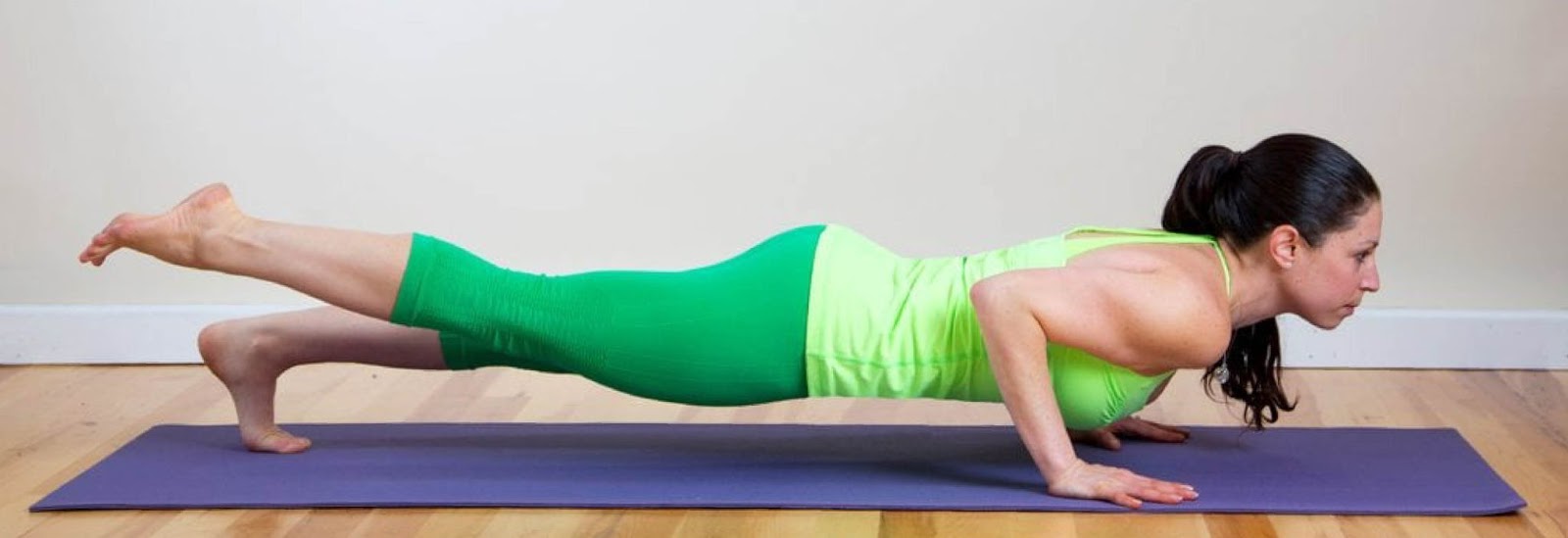
There is a lot of information and talk about maintaining a strong core. What exactly does that mean? Many believe core muscles are only the abominable muscles, however, core muscles include your back, glutes, quads, and oblique muscles. These muscles are vital for balance and stability. Weak core muscles and poor core strength can increase your risk for back pain and muscle imbalances. Keep your core strong by exercising regularly and performing specific core-focused exercises.
When you’re in pain, there’s not much better than a heating pad or ice pack to help with inflammation. There’s a reason why the school nurse would make you a homemade ice pack- it works! A 2014 study found that alternating between heat and cold therapies reduced back pain in the short term. It is recommended to alternate between hot and cold every 15 to 20 minutes.
Until a few years ago, foam rollers were mainly used by gym rats after tough training sessions. As the use of these handy and pain relieving tools grew in the fitness industry, people took notice. Foam rolling is similar to a sports massage and is proven to ease back pain, decrease muscle stiffness, and promote recovery. Foam rollers are widely available at stores and online. Here are a few suggestions on how to use a foam roller from the National Academy of Sports Medicine.

For many, sleep position and back pain are linked. Even if your back pain is caused by injury, illness, or another health issue, your sleep position can have an impact on your back pain and overall quality of life. Trying out these sleep positions as well as performing some activities listed above can help ease your back pain. When it comes to your health, it is best to consult a doctor.
Back pain can also be caused by poor quality or old mattress. Or, if your mattress is not suited to your body type and sleep position. If you think a mattress is the root cause of your back pain, SleePare can help!
Try out our comparison tool, read about chiropractor-recommended mattresses, and schedule a showroom appointment at one of our stores. Before making a decision on how to manage your back pain, make sure to see a doctor for a proper evaluation and diagnosis.


 Showrooms
Showrooms
About The Author
Dustin Morgan
Sleep Expert & Store Manager
Dustin Morgan is the Chief Mattress Analyst and Sleep Technology Expert at SleePare. He combines his computer science background with his passion for sleep innovation. With personal experience testing over 200 mattresses, Dustin offers unmatched insights into finding the perfect sleep solution for various needs. His work focuses on delivering honest and detailed comparisons and advice to help individuals achieve their best sleep. When he is not exploring the latest sleep technology, Dustin enjoys spending time in the great outdoors and gaming in his Virginia home.